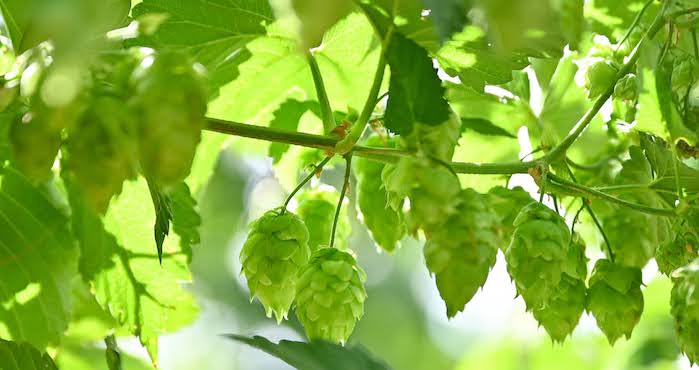Hop Science Newsletter (May 2015)
In this issue: isohumulones and carboxylic acids, hard resins in hops, and the meaning of pils in Germany.

ISOHUMULONES AND CARBOXYLIC ACIDS
How do degradation products of isohumulones relate to staling compounds in bottled beers? There have been publications in the late 70’s proposing that oxidative degradation of isohumulones produces staling aldehydes. However Clippeleer et al was able to show that the appearance of staling aldehydes is independent from the mode of hopping! This German research team looked into elucidating the molecular mechanisms leading to flavor active carboxylic acids from degradation of iso-α-acids. So far no mechanism for their formation is given in the literature. Iso-α-acids can also be recognized as ß-dicarbonyl structures and may show the same reactions as other ß-dicarbonyls, e.g. it was shown that acetic acid is the main cleavage product from 1-deoxyglucosone formed by hydrolytic ß-dicarbonyl cleavage in Maillard reaction systems. The formation of these acids was studied under defined conditions. Carboxylic acids and amides were formed preferentially under oxidative conditions and increasing pH. Stable isotope experiments excluded the incorporation of molecular oxygen into carboxylic acids, strongly indicating a hydrolytic mechanism via ß-dicarbonyl cleavage. The proposed mechanism includes oxidation and thereby incorporation of molecular oxygen to the isohumulone ring structure followed by hydrolytic cleavage leading to acids and amides. In dubio pro reo (benefit of the doubt) – but also an acquittal for the isohumulones being unguilty regarding staling is not in sight…¹
MORE BITTER TRUTHS…
The reputation of the hard resins in hops could be better! Numerous articles refer to the hard resin as part of the hop resins with no brewing or any other value. How little do we know!…It is time to rethink! This German research team took the hard resin fraction of hops apart and were able to identify and quantify a lot of valuable components in it, e.g. xanthohumol derivatives, 6-prenylnarengenin, comultifidol glucopyranoside. Also some astringent molecules were identified as cis/trans-p-coumaric acid,quercetin and quercetin-3-O-ß-D-glucopyranoside, ad-multifidol glucopyranoside and n-multifidol-di-Cglucopyranoside, trans-N feruloyltyramine, kaempferol-3-O-ß-D-glucopyranoside kaempferol-3-O-ß-D-(6″-malonyl) glucopyranoside. Human sensory analysis revealed low bitter recognition threshold concentrations for these compounds ranging from 5 (co-multifidol glucopyranoside) to 198 μmol/L (trans-p-coumaric acid ethyl ester) depending on their chemical structure. Sensory trials revealed the additive contribution of iso-α-acids and the identified hard resin components to be truly necessary and sufficient for constructing the authentic bitter percept of beer. Finally beers exclusively brewed with the hard resin fraction as the only hop source impressively demonstrated the possibility to produce beverages strongly enriched with prenylated hop flavonoids. Dear hard resins, forgive us for being so unkind and blind all these years!²
WHAT DOES PILS MEAN IN GERMANY?
Analysing data for German Pils beers for 30 years, these researchers found that the bitter units have decreased from 30 to 27, which confirms our own analyses over the past 10 years. It is a fair question to ask – is this misleading the consumer? Isn’t the expectation of a pils beer strongly connected with a certain bitterness?³
EVENTS
2015 ASBC Annual Meeting
June 14-17th, La Quinta, California.
See what science can brew for you. It will be hoppy and hot in La Quinta! More than 20 presentations will focus on hops! Don’t miss it! Looking forward to meeting you there!
PROUDLY INTRODUCING…YELLOW SUB!
This newest addition to our creative product line turns with passion the fine and excellent hop aroma into a sweet, fruity Flamenco of apricot and orange with just a hint of blackberries, making your beer irresistible. Alpha 6,6%; oil 1,3ml/100g. Available after harvest 2015! If you are interested in receiving more info, follow us on facebook!



